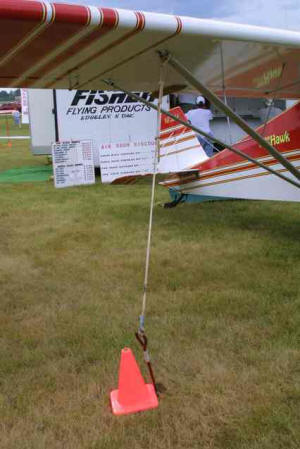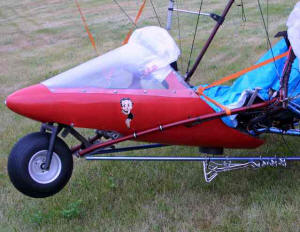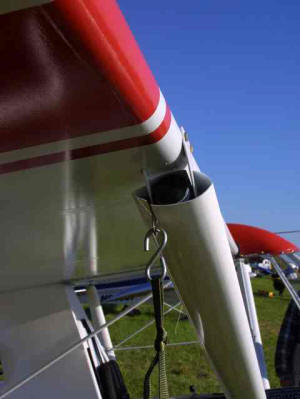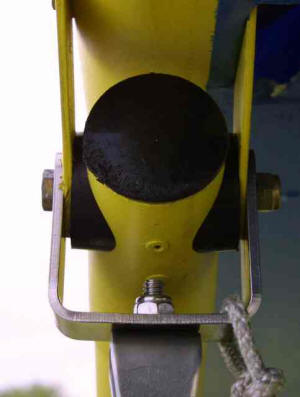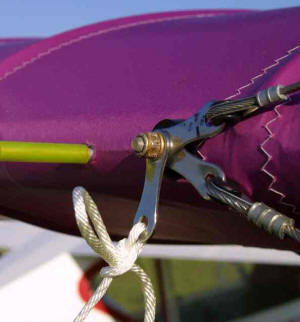| You need to prepare for strong winds, because they can arrive
unexpectedly. Do not leave your aircraft unattended without using
your tie-downs.
What follows is a handful of tie-down suggestions. Whatever you use for a stake should be at least two feet long. You
can get away with shorter lengths in less challenging situations.
You can make a canvas carrying bag for your tie-downs. Or use a
large diameter piece of PVC pipe, cut to the right length, and cap
the ends for a handy and sturdy carrying case.
Rebar
Rebar is a fairly inexpensive solution. Use two or three pieces
of rebar for each tie-down point. They can be 2 feet, 3 feet, or 4
feet long depending on the size of your plane, your comfort level,
and whether you use two or three pieces per tie-down. Many
hardware stores carry various lengths of rebar, so you don't have
to cut it yourself.
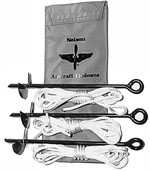
When using two pieces per tie-down, pound them in so that an "x"
is formed a little above ground level. With three pieces, make a
cone. Tie your rope around the "x" or small part of the cone.
Cover the end of rebar with something to prevent cuts. Use old
tennis balls, plastic drink bottles, or soda cans.
Grind one end to a point to make it easier to insert in hard soil.
This isn't necessary in the Black Rock, but can be handy in rocky,
hard soil.
A sledgehammer will be available at the
Phoenix Bar & Lounge so you don't have to bring your own.
Building Anchors
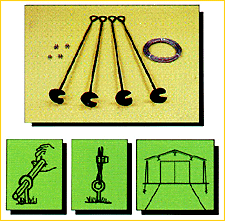
Building anchors are another good solution. Arrow is one
manufacturer and you can see a picture of the anchors at their
website,
http://www.arrowsheds.com/aanchor.htm
Model AK4 anchors are 30" long and BillyBob, the structures guru,
believes their claim to 1500 pounds of pullout force is reasonable
under normal desert conditions.
Several aviation supply stores carry these or
similar anchors, though probably at a higher cost than the ones
from the hardware store.
Other
Buy two steel rings, 2" in diameter. Buy two 4' lengths of steel
angle, about 1/4" thick by 3/4" wide. Cut each piece of angle iron
into three equal lengths, so that you have six stakes. Sharpen one
end of each stake.
Lay the ring on the ground at your desired tie-down
point and drive three stakes into the ground within the ring even
spaced around the ring. Each stake should be angled about 45
degrees. Leave four to five inches sticking up and the ring is
held securely. Tie your rope from the ring to the plane. This
solution weighs less than five pounds and costs less than $15.
Placement
Your aircraft works as a lever, so you don't want to put the
tie-down point directly below your tie-down rings or they pull out
too easily. Try to get four feet horizontal for every foot
vertical on the rope. This is easier to do on low-wing aircraft.
Airports always attach the tie-downs inboard of the
rings, to maximize parking space and keep people from tripping
over the ropes as they walk between planes.
|




